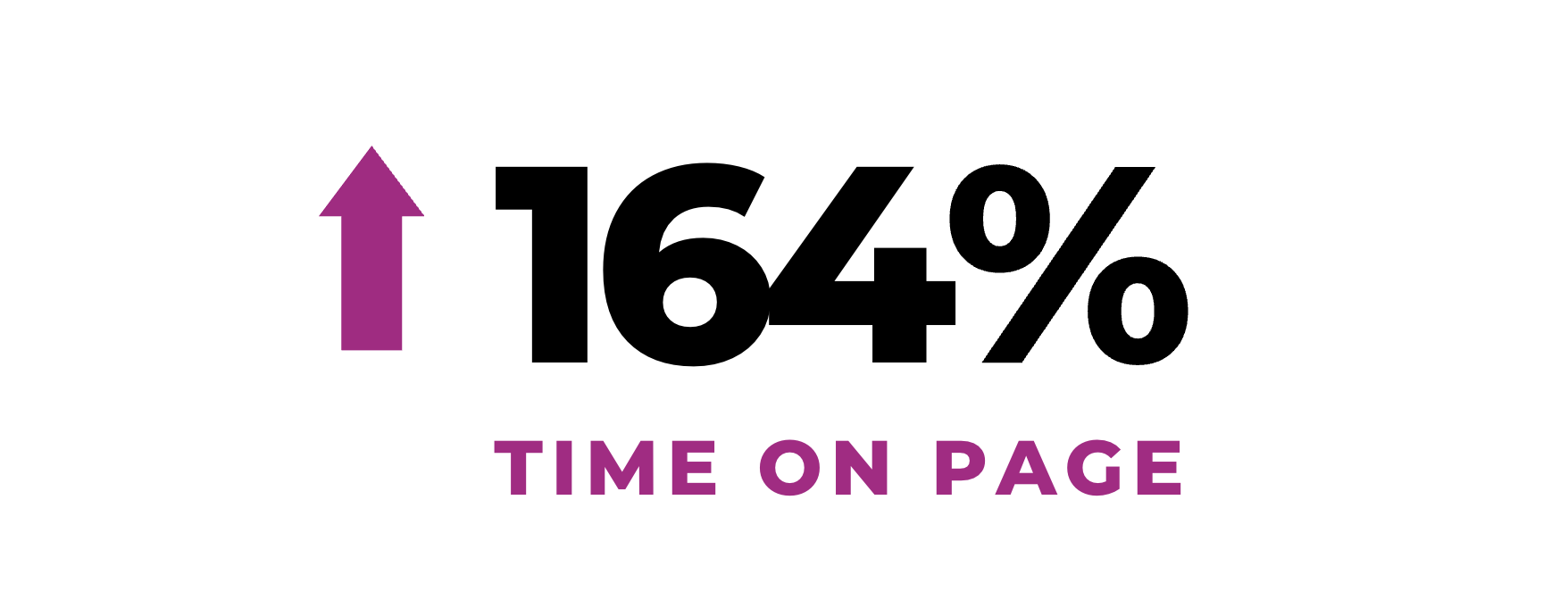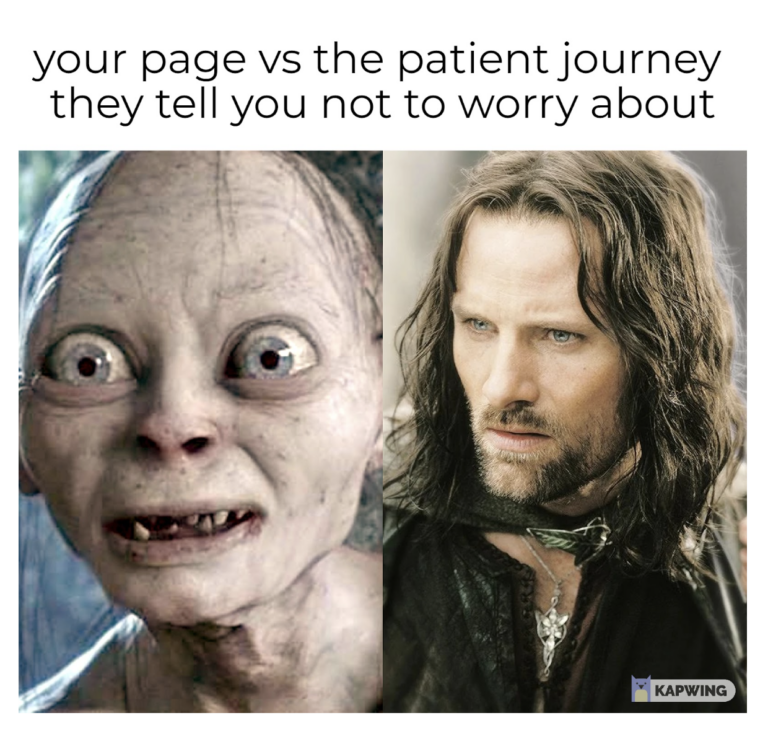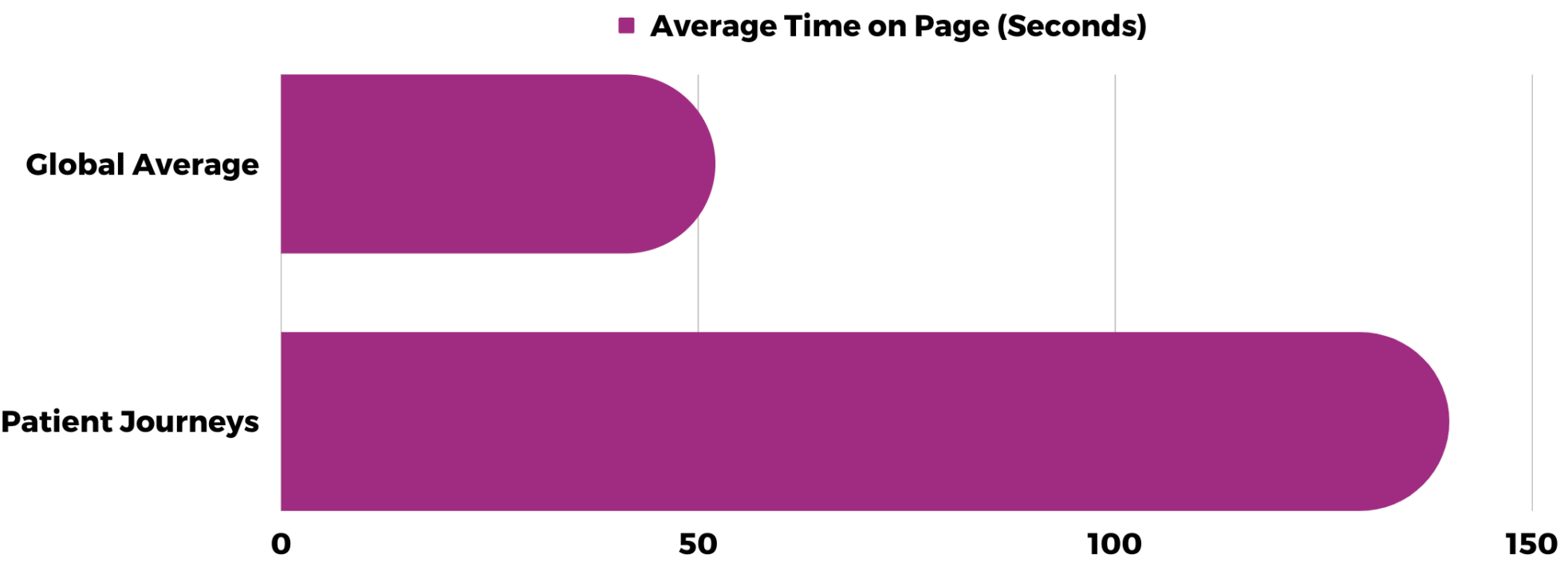| Editor's Note: This article is part of the Power of Patient Journeys series. In this series, we will illustrate four foundational ideas for creating and utilizing the compelling narratives of your patients. As the industry develops, we will continue to update these guides. You can keep up with those changes by signing up for our newsletter. Here are the parts: Part 1: Gaining New Patients Through Expert Storytelling Part 2: Solving the 3 Modern Content Problems Part 3: Six Questions to Determine if Patient Journeys Are Right for You Part 4: Choosing the Right Patients |
Table of Contents
1. The Problem of Trust
2. The Problem of Authenticity
3. The Problem of Attention
If you have read Part 1 of this series, then you already know all about how awesome Patient Journeys are. Hell, you might have even already decided you wanted to pursue them.
But if you aren’t sold yet, don’t worry; after this Buzzfeed style “5 Incredible Things You Won’t Believe About Patient Journeys — Number 5 Will WRECK YOUR LIFE” article, we know you won’t be able to resist.
Obviously, we are kidding. We aren’t going to try to make the claim that your whole life is going to end if you don’t read this article. That would be ridiculous.
Only your professional life will.

Jokes aside, the big question most people have at this stage in the game is:
What problems do Patient Journeys solve that my regular content doesn’t?
It’s a fair question. And to answer it thoroughly, we are going to cover 3 of the most common challenges everyone faces when it comes to creating successful online content.
More importantly, we are going to talk about how Patient Journeys absolutely crush them.
1. The Problem of Trust
Everyone has trust issues these days, and rightfully so. The internet has a ton of information, but, unfortunately, not all of it is reliable. Even if someone happens across your content, accurate information alone is often not enough to convince someone they should trust you.
The natural gut reaction that practices have in response to the “why should I trust you” objection is to spew out their entire résumé and curriculum vitae on the page. But there are better ways.
Résumé? I’ll take “most pretentious apostrophes” for $500, Alex.

It might be impressively distinguished, but at the end of the day, no one likes the guy at the party who can’t stop talking about himself. Plus, remember what we mentioned in Part 1 of this series, it isn’t about you. It’s about the patient.
These aren’t new anomalies though. So, how have we overcome those objections in the past? Traditionally, customer reviews and before and after photos have been very successful tools, but they are long overdue for some innovation.
Customer Reviews
Here is some data to blow your mind:

In 2021, 49% of people trusted online customer reviews as much as personal recommendations.
That means, in the eyes of half the population, a random stranger on the internet has as much pull with your potential patients as their own mothers do.
Simply having customer reviews is a great start. People care about what other people have to say, but everyone has them. You aren’t breaking any boundaries with simple reviews, just maintaining the status quo.

Now consider the other 51% of consumers that don’t trust customer reviews to the same extent. Why are they so suspicious?

Well, 62% of consumers believe that they have seen a fake customer review in the last year for a local business (i.e., someone like you).
The reasons are about as expansive as a dictionary: over-the-top praise, multiple reviews with similar content, anonymous posters, etc.
Ultimately, many of these reviews feel like a sales ploy from the business. And even the good ones are a dime a dozen.
But imagine…
What if your customer review wasn’t just a review?
What if it were an entire story, crafted specifically to give the full version of that customer’s experience?
What if it used a real patient and told a real story?
After all, reviews can be faked by shady businesses, but a nonfiction story and pictures from someone with real trauma and healing and development? That is much more trustworthy than getting a 100-word abridged synopsis.
What if a nervous patient was able to learn about how the doctor letting them play their own music calmed another patient’s nerves? How simply being told ahead of time what to expect for their specific treatments made a world of difference to the patient who loves to plan?
What if, in short, you learn about the things that make patients want to refer you in the first place.
What if you made the all-powerful customer review better?
What if you made… a Patient Journey?
Before and After Photos
Aesthetics has found a different tool nearly equal in power to the customer review to add to its marketing arsenal: before and after photos.
If you look into the analytics for any procedure on the aesthetic market, you will find that “before and afters” are one of the most consistent and popular search terms to appear alongside any procedure name.
At its core, this is what people want to know. Will the problem I have be solved and to what degree? Before and after photos are the quickest way to answer that question.
But… they don’t do much after that. What before and afters have always lacked is context. A good picture alone never tells the story, and it is hard to relate to a person you know nothing about.
Not to mention, the aesthetic market is absolutely saturated with before and after photos, none of which offer any assurance that the image they are seeing is actually legitimate. Everything can be photoshopped nowadays.
But imagine…
Seeing the patient’s before and after images right after reading about how they hadn’t worn a dress in years because they were self-conscious about their breast size.
That is a much more vivid picture of a person’s improvement that goes beyond just the physical. Sure, the pictures are included, but the readers of a patient journey are also learning about how their own day-to-day lives can be improved, just like the person they read about.
A picture might be worth a thousand words, but it really depends on the author.
This personal connection — this level of trust that develops between a potential patient and a patient who has already been treated — is worth your practice’s weight in gold.
The Whole Is Greater Than the Sum
We all love a bit of Aristotle, but there has probably been no greater application of this famous quote than when discussing how a patient journey is more than just the sum of its parts.
It delivers, to a higher degree, everything that customer reviews and before and after photos do, but it adds a little bit of spice along the way.
You get the entire package PLUS the benefit of providing content that is simply more engaging than either of those other options. Nobody’s ever won a Pulitzer for a thoughtful review on Yelp.
There have, however, been quite a few awards won for compelling stories about people who have clawed against adversity, fought through their trials and tribulations, transformed from an ugly duckling to graceful swan, pulled themselves up from rags to riches, or just, you know, had an experience that a lot of people could relate to.
2. The Problem of Authenticity
Being authentic in a generic web is difficult. When someone who is browsing your website comes across a patient journey, they are spending more time on it than a typical procedure page or blog.
 In fact, we have success stories where Patient Journeys
In fact, we have success stories where Patient Journeys
have achieved a 164% increase in Time on Page.
This isn’t a Will Smith backhand aimed at the rest of your content. Those pages, when done correctly, are doing their jobs. There is just something fundamentally different about reading a real person’s perspective. It is harder to misconstrue it as just more marketing material — it feels authentic™.
Yeah, sorry. We know that word gets tossed around by
online “gurus” more than a freshman’s hacky sack.
But there is something to be said about a brand or personality or voice that feels like it isn’t trying to sell you something… even if it is actually trying to sell you something.
You can google “vein treatment near me” and Google will get you 1,000,000 results in a fraction of a second. But there is only one Dylan Zeigler who can tell the story of her struggle with varicose veins as early as the age of 14, and how the only person to give her relief was the team at California Vein Specialists.

Dylan, a real patient of California Veins, shows off her results
and tells her full story in a recent patient journey.
There is only one Erin, a wife, mother of twin boys and psychotherapist, who struggled with constant back pain from excess breast tissue. The story of her finally finding reprieve through Plastic Surgery Austin is unique, personable, and as genuinely authentic as you could ask for.
A Visceral Experience
When it comes to ranking on Google, information is the name of the game. But when thousands of different websites are clawing for traffic, using a different story-telling approach is a great way to set yourself apart from the masses and give a human perspective.
This human perspective is paramount, especially when you understand that aesthetic surgeries and even minimally or noninvasive treatments are visceral experiences for people targeting conditions that they have suffered from for long periods of time.
The emotions that result from these conditions are deeply, deeply personal.
When a potential patient fosters camaraderie with someone who is just like them, who then tells them that your practice was the reason their life changed, they are going to form a deeper connection with your business and will be more trusting of you from the start.
3. The Problem of Attention
You’ve probably seen a few articles out in the wild about how the attention spans of humans are dropping in the wake of the digital age. In a recent report, Microsoft reported that the average human attention span dropped from 12 to 8 seconds.
If the data is right, that means the average person has
a shorter attention span than a goldfish.
But hey, don’t worry, even Dory could remember the address to that dentist’s office (P. Sherman 42 Wallaby Way, Sydney), so I am sure we can make a real person remember your office too.

Goldfish conundrum or not, the collective inattention of patients is a real issue practices are facing.
(P.S. We have an article coming out next month on this. How to rework your medical marketing for short attention spans. Stay tuned!)
Apps, notifications, emails, ads, the Kardashians — your patients are getting pulled in a million and one ways at any given moment.
The average session duration for the healthcare industry is less than two minutes. That’s not per page either, that is the entire amount of time they spend on your website.
In less time than it takes to microwave a Hot Pocket, you have to be able to convince your audience they want your service and that you are the person they want to perform that service.
On your mark… get set…
Wait. Because this is where I tell you how patient journeys shine ✨quantitatively.✨
Patient Journeys Break the Game
 (If you are wondering why we randomly threw in a Lord of the Rings
(If you are wondering why we randomly threw in a Lord of the Rings
meme, you must have missed our last post.)
Even in today’s frenetic world, patients can still be captivated by an incredible story, and the data proves it. Patient journeys keep potential patients on a single webpage for longer than most practices are able to keep them on their entire website.

We have found that the average time on page for a patient journey is two minutes and 20 seconds, or 140 seconds total. That’s compared to a global average of 52 seconds.
No, we didn’t do the math wrong. I checked. And before you ask, it is
the average as in the mean, for all the stats police out there.
After 13 patient journeys were analyzed, we found users on websites who read patient journeys engage with more content throughout the site, stay on the website longer, bounce less, and convert to consultations at higher rates.
Impressive, we know.

The (Content) Struggle Doesn’t Have to Be Real
Now, this is the part where you think about whether you have the time to take on producing patient journeys and other narrative content that can overcome these challenges. Before you answer that question, let me ask you a question first: have you finished all of your charting?
If the answer is no, then we are going to go out on a limb and say you could use some help. Not just because of time, but because we already know how to execute the kind of storytelling you need to be successful.
As usual, our educators are here to answer any questions you have, anytime, for free. Give us a call at (800) 949-0133 or schedule a one-on-one.
In Part 3 of this series, we will answer 6 more questions you might have to figure out if Patient Journeys are a good fit for your practice.
 (If you are wondering why we randomly threw in a Lord of the Rings
(If you are wondering why we randomly threw in a Lord of the Rings




